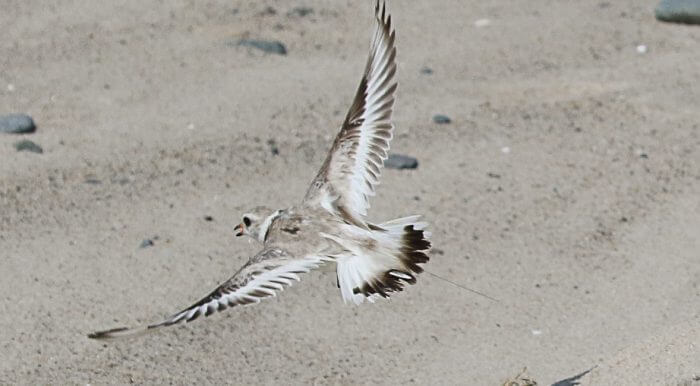U.S. offshore wind developer Deepwater Wind is partnering with researchers from the U.S. Fish and Wildlife Service (FWS), the University of Rhode Island (URI) and the University of Massachusetts Amherst to assist with their studies of bird and bat activity off the Atlantic Coast. The studies, funded by BOEM, provide data on offshore movements of high-priority species to inform conservation efforts, says Deepwater.
In August, Deepwater Wind installed a wildlife tracking station on the easternmost foundation platform at the Block Island Wind Farm, located three miles off the coast of Block Island, R.I. The tracking station contains four antennas, plus a receiver that collects data on migrating patterns of birds and bats that scientists have previously tagged with tiny, very high-frequency (VHF) transmitters, weighing less than 1.5 grams each. These transmitters provide data on any tagged species that fly within a 20-mile radius of the wind farm, Deepwater explains.
This new technology has been implemented in a coordinated network across eastern North America in the last five years – helping researchers accurately track wildlife movement as animals migrate along the Atlantic Coast.
This station is among more than 40 tracking stations along the U.S. East Coast, including two receiving stations located on the southern coast of Block Island. The new tracking station at the Block Island Wind Farm will allow researchers to collect more detailed data on wildlife movements in the Rhode Island Sound area. The stations will be active until mid-October and then will be re-deployed next spring.
FWS biologist Dr. Pam Loring says the tracking stations are operated in collaboration with the Motus Wildlife Tracking Network, a coordinated system to track migratory animals marked with digital VHF transmitters throughout the Western Hemisphere. The Motus network is led by Bird Studies Canada in collaboration with more than 120 partners.
“This is an exciting opportunity to pilot digital VHF technology for tracking movements of birds and bats at the first offshore wind energy facility in the United States,” Loring says. “Results from this study will help agency and industry partners balance renewable energy development with conservation of focal wildlife species and will guide the use of this technology at additional offshore sites in the future.”
Dr. Peter Paton of URI adds, “This newest station on the Block Island Wind Farm, coupled with the two stations on Block Island, represents the first attempt anywhere in the world to assess fine-scale movements of birds and bats near an active offshore wind farm. Thus, there is considerable interest from biologists around the United States and across the planet on the results of this research.”




